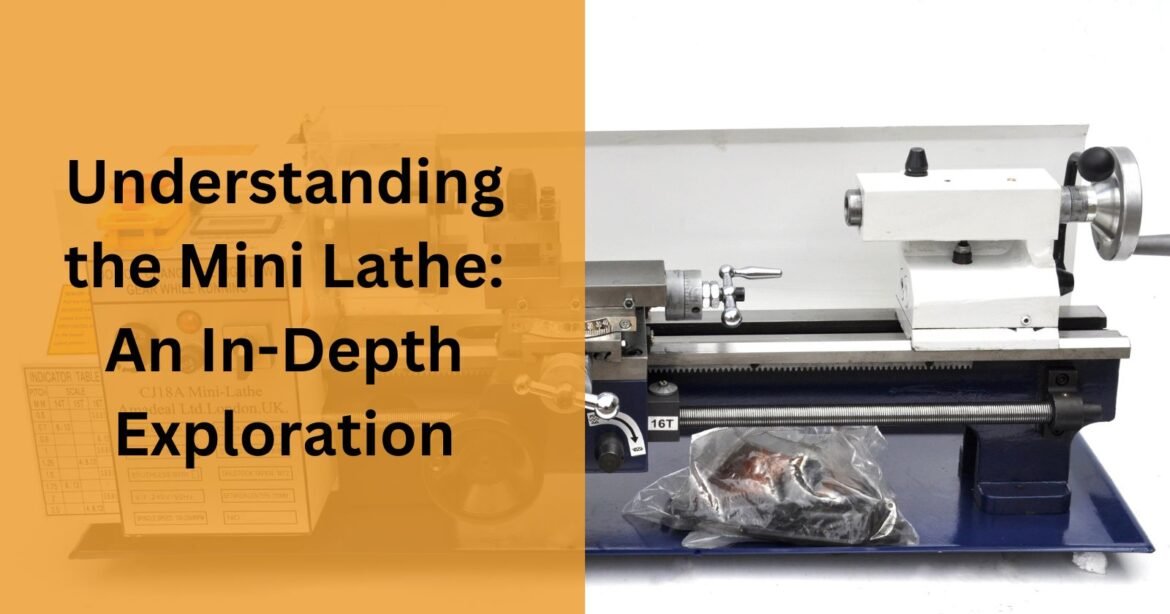Mini lathes have become an essential tool for hobbyists and small workshop owners, offering a versatile and compact solution for various turning tasks. This article aims to provide a comprehensive understanding of mini lathes, their specifications, applications, and how to choose the right one for your needs.
Specifications and Features
Mini lathes, often called micro lathes or pen lathes, are scaled-down versions of full-sized lathes. They typically operate with 1/8 to 1/2 horsepower (HP) motors, allowing speeds of 1000-5000 rotations per minute (RPM). The smaller size means they usually weigh less than 60 pounds, making them portable and suitable for bench-top use. In contrast, full-sized lathes can have motors up to 5 HP, weigh several thousand pounds, and occupy significant floor space.
Key Specifications:
- Horsepower: 1/8 to 1/2 HP
- Speed: 1000-5000 RPM
- Weight: Up to 60 pounds
- Max Turning Diameter: 10 inches
- Distance Between Centers: 18 inches
Safety Considerations
Despite their smaller size, mini lathes require careful handling to ensure safety. The reduced power and size make them less intimidating and generally safer than their larger counterparts. However, standard safety precautions for operating lathes apply. Users should always wear appropriate safety gear, including eye protection and gloves, and avoid loose clothing or jewellery that could get caught in the machinery.
Applications of Mini Lathes
Mini lathes are incredibly versatile, suitable for a variety of projects ranging from crafting custom pens to turning small bowls and table legs. They are favoured by woodworkers and metalworkers alike for their precision and ease of use. Here are some common applications:
- Woodworking: Turning pens, bowls, table legs, peppermills, bottle stoppers, and tool handles.
- Metalworking: The precision turning of small metal components, though typically less powerful than full-sized metal lathes, is sufficient for smaller projects.
Choosing the Right Mini Lathe
When selecting a mini lathe, consider your primary use cases. Here’s a breakdown of factors to help guide your decision:
Mini Wood Lathes
Mini wood lathes are designed for turning wood and resin. They have a simpler design compared to metal lathes, featuring a headstock, tailstock, bed, and tool rest. This simplicity makes them easier to maintain and safer to operate.
Key Considerations:
- Type of Projects: Ideal for small to medium-sized woodworking projects.
- Ease of Use: Simple design and operation.
- Maintenance: Fewer parts and attachments, making them easier to maintain.
Recommended Models:
Mini Metal Lathes
Mini metal lathes are designed to handle metal turning projects. They feature a more complex design with a carriage assembly to hold and control the cutting tools, providing greater precision and detail in metalworking.
Key Considerations:
- Type of Projects: Suitable for small metalworking projects requiring precision.
- Power and Precision: Higher power and more precise control compared to wood lathes.
- Complexity: More complex and may require more maintenance.
Recommended Models:
Conclusion
Mini lathes offer a compact, versatile, and accessible option for both beginner and experienced hobbyists. Whether for woodworking or metalworking, understanding the specifications and applications of mini lathes can help you make an informed decision and enhance your crafting experience. With proper selection and safety practices, mini lathes can be a valuable addition to any workshop.
By exploring different models and considering your specific needs, you can find the perfect mini lathe to embark on your turning projects. Happy turning!
